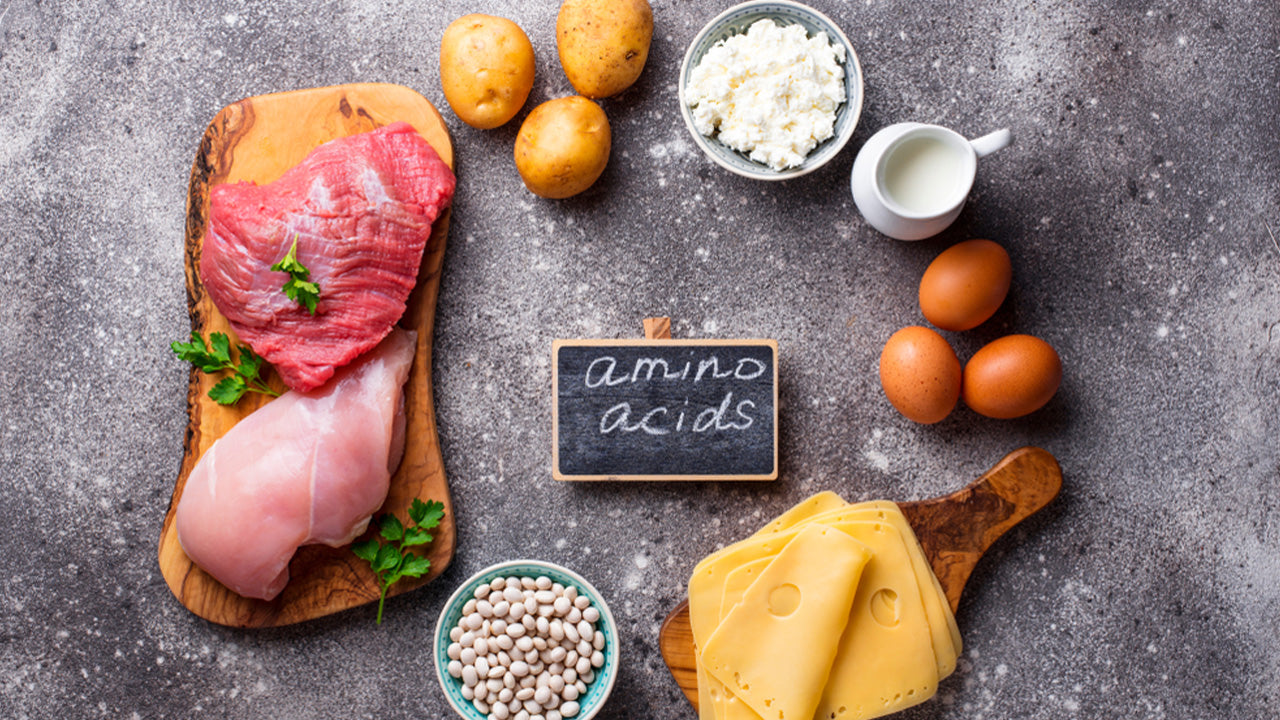How to Increase Amino Acids in Your Diet for Mind and Body Wellness
 By: by Amino Science
By: by Amino Science

Boosting protein intake isn’t as easy as eating foods high in protein. There is protein quality and digestibility to take into account. And because protein is so satiating, especially when accompanied by the carbohydrates in dietary protein sources, it can adversely affect the rest of your appetite and lead to nutrient insufficiencies of other kinds. Here are the best ways to increase amino acids in your diet for total mind and body wellness without any of the imbalance.
What Are Amino Acids?
Amino acids are the building blocks of protein. They link together in a specific order to form a protein. There are tens of thousands of body proteins, all with an important role to play. Some proteins build body tissue...muscle tissue, connective tissue, epithelial tissue, and nervous tissue. Other proteins act as or produce enzymes, neurotransmitters, hormones, and antibodies. And still others activate virtually every cellular process in the body.
There are 20 amino acids that make up the proteins we need to survive. These amino acids are separated into two main categories: essential amino acids and nonessential amino acids.
The essential amino acids (EAAs) cannot be made in the body. The only way to get them is through your diet or supplements. The nine essential amino acids are:
- Histidine
- Isoleucine
- Leucine
- Lysine
- Methionine
- Phenylalanine
- Threonine
- Tryptophan
- Valine
The other 11 are the nonessential amino acids. Your body can produce them, which makes dietary intake of these amino acids less of a priority unless you’re battling a specific health condition that depletes one or more of the following:
- Alanine
- Arginine
- Asparagine
- Aspartic Acid
- Cysteine
- Glutamic Acid
- Glutamine
- Glycine
- Proline
- Serine
- Tyrosine
Why Increase Amino Acids?
There are several reasons to boost amino acid intake.
- You’d like to embark on a high-protein diet for weight loss.
- You want to build and maintain muscle mass.
- You’re trying to strengthen your immune system.
- You want to reduce soreness from an intense workout.
- You have an upcoming surgery and want to recover faster.
- You are injured and down for the count and want to protect against muscle loss.
- You want to increase stamina and endurance during your workouts.
- You want to lower cholesterol and blood pressure and bolster heart health.
- You want to optimize the health of your kidneys and liver.
- You want to improve brain function, memory, and mood.
- You want to regulate insulin and blood glucose levels.
- You are an older adult having difficulty eating enough protein.
- You want to age gracefully and strong.
Ingestion of amino acids supports each and every one of these health goals. Increase your body’s concentration of amino acids with the following tips.
Tip #1: Supplement with Essential Amino Acids
We’ll cover the best ways to boost your intake of dietary protein in a moment, but first we have to give a nod to the very best way to promote overall wellness—taking an amino acid supplement.
An essential amino acid supplement doesn’t need to be broken down and digested like dietary protein does, as it's formulated with free amino acids that immediately increase plasma amino acid concentrations. The amino acids in a balanced supplement are readily available to perform their prescribed functions in the body.
But not just any amino acid supplement will do. It is important to supplement with a balanced ratio of all the essential amino acids, not just the branched-chain amino acids (BCAAs—leucine, valine, and isoleucine) as many weight lifters looking to build skeletal muscle are prone to do.
Taking in a disproportionate amount of one amino acid, such as leucine, reduces concentrations of other amino acids. This can stall muscle building and recovery, lead to dips in neurotransmitters such as serotonin and dopamine, and impact memory and mood, among other adverse reactions.
When essential amino acids are given in free form they increase plasma essential amino acid levels, reach plasma peak values quicker, and are absorbed faster than when essential amino acids are given as a component of dietary protein. Essential amino acid supplementation, therefore, is a proven effective nutritional intervention in high-need individuals of all ages (1).
Click here to learn more about the best essential amino acid supplements for your health goals.
Tip #2: Choose Complete Proteins
Complete proteins are dietary proteins that contain adequate amounts of all the essential amino acids. Animal proteins such as meat, eggs, and fish are the most high quality of the complete proteins, including dairy byproducts such as whey and casein proteins.
There are also some complete plant protein sources, including quinoa, chia seeds, hemp seeds, and soybeans, but most plant proteins are low in one or more of the essential amino acids. For example, whole grains are low in lysine while legumes tend to be low in methionine. To help make your meals more complete you can combine complementary proteins such as brown rice and beans.
Tip #3: Make the Most of Protein Metabolism with Resistance Exercise
The physiological basis for building and maintaining muscle is stimulation of muscle protein synthesis. Resistance exercise primes the muscle for increased muscle growth, but an extra supply of essential amino acids is needed to activate the anabolic response and make new muscle. You can’t make something out of nothing!
Want to maximize your muscle gain? Take essential amino acids before, during and after resistance training. Missed your post-workout dose? Essential amino acids have even been proven to boost muscle protein synthesis and enhance the metabolic effect even when consumed 3 hours after a workout (2).




 833-264-6620
833-264-6620


















